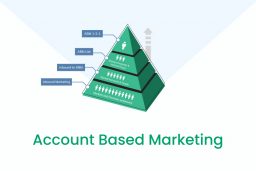
Analytics. Their purpose is to surface insights that help you manage and grow your business. The casual observer might think that all analytics are created equally; they aren’t. There’s a spectrum, with some more powerful than others. Below are four important categories of analytics – each more powerful than the next.
1) Descriptive Analytics
When you track data like email opens, clicks, and replies, you’re surfacing descriptive analytics. Descriptive analytical data shows you what happened in the past, and it’s the simplest and most widely used. The data summarizes events in easily digestible charts and reports. 80% of business analytics are descriptive. This is changing, however, as technology grows more sophisticated.
2) Diagnostic Analytics
Think ‘drill down data.’ We’re talking data discovery, data mining, and correlations— findings that display deeper information as an analytical dashboard. Diagnostic analytics examine the cause of past performance. It tells sales managers and leaders how their teams are performing by showing things like pipeline, activities, opportunities, and closed deals. Diagnostic analytics give you an understanding of a problem that happened so you can adjust actions going forward to rectify it.
3) Predictive Analytics
While descriptive and diagnostic analytics assess past events, predictive analytics take it one step further – predicting what’s probable in the future. Just like predicting the weather, predictive sales analytics uses advanced techniques like statistical, modeling, and data mining to find patterns in the data. See Gartner’s full explanation here.
In a sales setting, predictive data might forecasts things like opens, clicks, and reply rates for a campaign based on past campaigns sent on the same day of week and at a similar and time.
4) Prescriptive Analytics
Imagine a feedback system that consistently gains intelligence from analyzing actions and their effects. (i.e. “do this if you want to achieve that”). A prescriptive system figures out the most likely consequence of different choices of action, and recommends a best course of action to improve an outcome. Prescriptive systems analyze the most meaningful, granular sales metrics and optimize recommendations in real-time. Sales reps learn how they should move forward based on real-time data such as prospect engagement, and managers have a clear path for coaching their teams.
Why Analytics Matter
On a sales team, each type of analytics is an integrated part of everyday life. Sales reps use descriptive email tracking data to understand what historic messaging has best engaged their audience at each stage of the funnel.
Managers use diagnostic analytics to understand how their teams are performing and pinpoint what the high-performing contributors are doing differently. Determining the cause allows them to coach the rest of the team to adopt the same strategy.
Teams with predictive analytics have a good guess about what their prospect’s response rate will likely be based on data from past campaigns.
And prescriptive systems guide teams in real-time telling them the exact steps to take to reach their ideal outcome (creating opportunities and closing deals).
Original Blog: https://smartsellingtools.com/prescriptive-analytics-yesware/
Please refer to Mo-Data, Prescriptive Sales Analytics to check some cool sales analytics features that we offer.
For more information about MoData offerings click here




